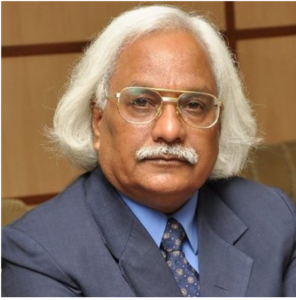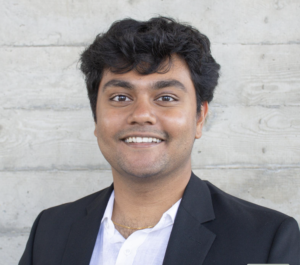Anugyan Sharma and Prof. PB Sharma

At a time when the global community is evolving towards a happy, healthy, and blissful habitat on Mother planet Earth – we need to seriously examine the context as well as the purpose of development and the purpose of life. Long ago the cherished objective of a healthy and blissful life was examined from the point of view of the ‘science of life’, in fact, the ‘science of healthy life’ as enshrined in the ancient Vedic texts of Ayurveda. For the Ayurveda Acharyas medical science was not merely the treatment of disease, rather it was to create the vital immunity in man to resist the diseases, and the viruses that otherwise were prevalent because of the rich diversity and microbial ecosystem that planet Mother Earth supports serve the cause of all lives that includes all creatures, plants and vegetables, the greenery in the forest, and of course, the microorganisms that prevail around the globe, maybe even in the space about which we have begun to understand today with our most advanced scientific tools of exploration and analysis.

The science of healthy life revolved around looking after the mind, and body as well as the intrinsic strength that lies in the eternal soul that powers all existence. Daily exercises, meditation sessions, prayers to the divine, and above all, a healthy diet akin to healthy and happy living comprised the total package to create high levels of immunity that negated diseases and assured longevity to live a happy and blissful life for a good hundred years and even more. It was this happy and healthy living with longevity that was within the reach of every single individual on planet Mother Earth under the medical system of Ayurveda.
Our ancestors, especially here in India, the country of the origin of Ayurveda, yoga, and meditation did not build super specialty hospitals, nor did they create such an elaborate medical health care system that we are heavily dependent on today, both for the diagnostic as well as the treatment of ailments and diseases. Periodic attacks of viruses like dengue, malaria, and the variants of COVID-19 continue to scare humanity at large even today, despite all the advancements that we have made on the medical front.
Medical sciences undoubtedly have grown to great eminence and today with the support of the diagnostic tools and systems developed by advanced technologies can pinpoint and accurately diagnose diseases and ailments. The ability to treat diseases including deadly viruses today is far more advanced compared to a few decades ago, thanks to the advancement in life sciences and biomedical engineering. It is however revealing that the global burden of disease is equally frightening.
As per the WHO report “The Top 10 Causes of Death”, August 2024, “the world’s biggest killer is ischaemic heart disease, responsible for 13% of the world’s total deaths. As a newly emerged cause of death, COVID-19 was directly responsible for 8.8 million deaths in 2021. Stroke and chronic obstructive pulmonary disease became the third and fourth in 2021, responsible for approximately 10% and 5% of total deaths, respectively. Lower respiratory infections remained the world’s most deadly communicable disease other than COVID-19, ranked as the fifth leading cause of death. Deaths from other noncommunicable diseases, such as trachea, bronchus, and lung cancers deaths have risen from 1.2 million in 2000 to 1.9 million in 2021 and are now ranked sixth among leading causes of death.In 2021, Alzheimer’s disease and other forms of dementia ranked as the seventh leading cause of death, killing 1.8 million lives. Diabetes was also among the top 10 causes of death, following a significant percentage increase of 95% since 2000.”
The point to ponder however is, that despite such phenomenal progress made by medical sciences and healthcare systems, the global burden of disease remains a major challenge. It is important to recognize that much of the progress that the medical sciences have made in the last few decades owes to its adaptation of advanced engineering and technology systems, both for the diagnostics as well as treatment of diseases and the advanced surgical procedures that include robotic surgery and administration of molecular medicine.
But think of a time when we are able to create a more profound and effective synergy between medical sciences on one hand and the advancement on the technological front including in the areas of nanoscience and technology, robotics and automation, image processing, artificial intelligence, and machine learning further supported by large data analytics and tomorrow’s health informatics – the medical profession would be far more advanced to reap the rich dividends from this vital synergy between medical sciences and advanced engineering and technology developments.
The 20th century carved out its higher education system along the two separate streams. Those with physics, chemistry, and biology went toward medical sciences and those with physics chemistry and mathematics surged toward engineering and technology education and research. Carving out such two separate streams immediately after schooling may have done some good for the advancement of each other domain but it deprived both the engineering as well as medical sciences of creating a much more impactful integrative sciences and integrative and interdisciplinary engineering than the advancement of medical science and human excellence so well could have achieved.
Disciplines like biomedical engineering have begun with integrating electronics, communications, and computing for the design and development of medical diagnostic tools systems, and devices and have come to a great stage of advancement today. But they still are deprived of their direct and live connect and collaborative strength that otherwise could be created with the synergy of medical sciences and integration with engineering and technology. Likewise, newer disciplines like bioengineering are today opening up new grounds for the development of bioengineering devices and systems even paving the way for tomorrow’s bio-inspired engineering materials and systems including biochips that shall pave the way for the integration of AI into the biological systems of tomorrow to facilitate transplants of many vital human organs that will assure much greater longevity and efficacy of such like surgeries. “Imagine a world where damaged organs can be repaired or replaced without the need for organ donors. Biomedical engineers are creating this extraordinary future through pathbreaking research and advancement in tissue engineering and regenerative medicine. Their efforts hold the promise of growing human organs in the laboratory, offering hope to countless patients awaiting life-saving transplants”, says Tanya Pandhi in her October 20, 2023, editorial in PriMera Scientific Publications. The moot point is that with the advancement of medical science and engineering technologies, we are in a position of great advantage to create new opportunities of creating new horizons of higher education and research in areas that shall effectively integrate medical sciences and engineering and reap rich dividends from collaborative research and education that the new age of AI and machine learning so well demands today.
The world of education and research in the areas of medical sciences and engineering in particular and environmental sciences climate resilient technologies, new renewable energy sources, and our ability to process 380 trillion liters of wastewater that is currently generated globally every year. Above all our ability to maintain the rich biodiversity, and environmental sustainability alongside a happy and healthy habitat singularly rests on our commitment to fostering integrative sciences and integrative and interdisciplinary technologies that include biomedical engineering and bioengineering disciplines that are gaining great momentum today in the advanced universities both in the US, Europe as well as around the globe, including here in India.
During my (Anugyan Sharma) stay, at UC San Diego where I am pursuing my bachelor’s in bioengineering, I get immensely excited to have a bigger picture of biomedical engineering and bioengineering for creating a happy, healthy, and blissful habitat for the 8 billion plus people around the world. At UC San Diego our program places a big emphasis on interdisciplinary majors in which the principles of traditional engineering fields such as mechanical, electrical, and chemical and applied to biomedical and biological problems. The overall mission of our program is to improve health and quality of life by applying engineering principles for scientific discovery and technology innovations and to train future leaders in bioengineering through inspiring education and innovative research. I see great opportunities for ushering in a new era of interdisciplinary and integrative engineering on one hand and a great synergy between engineering and medical sciences on the other. For a win-win situation for both the advancement of biomedical and engineering development.
The author Prof. PB Sharma is the champion of the cause of interdisciplinary sciences and integrative engineering, being the founder and President of the Society of Interdisciplinary Sciences and Engineering that was founded over two decades ago. He has nurtured a great interest in interdisciplinary and integrative approaches to science and engineering, during his long innings at IIT Delhi, Delhi College of Engineering, DTU, and also at Amity University Gurugram.In fact, Prof. Sharma firmly believes that the boundaries between science and engineering have long disappeared and that the new dawn and interdisciplinary engineering and integrative science is here to create new layers of advancement of medical sciences and medical technologies for creating a happy, healthy, and blissful life for the people around the world.
The purpose of this article is to reinstate the importance of integrative and interdisciplinary approach to all the disciplines of science and engineering and create an intense urge for the vital synergy between medical sciences and engineering to foster a new era of medical sciences and healthcare, in which the meaning and purpose of medical sciences and healthcare shall be redefined as creating wellness, a happy and healthy life, assuring longevity on the strength of immunity rather than running around for treatment of diseases and ailments, as at present.
The authors submit for consideration of the leadership of the universities and policymakers for the advancement of human health for the global community to create enabling policy reforms in higher education and research to facilitate the vital synergy between medical sciences and engineering, as we are in the age of integration and working together in areas that matter most for the wellbeing of humanity.
Anugyan Sharma is pursuing bioengineering at UC San Diego and Prof. PB Sharma is the Vice Chancellor of Amity University Gurugram and has been the founding Vice Chancellor of DTU Delhi.
